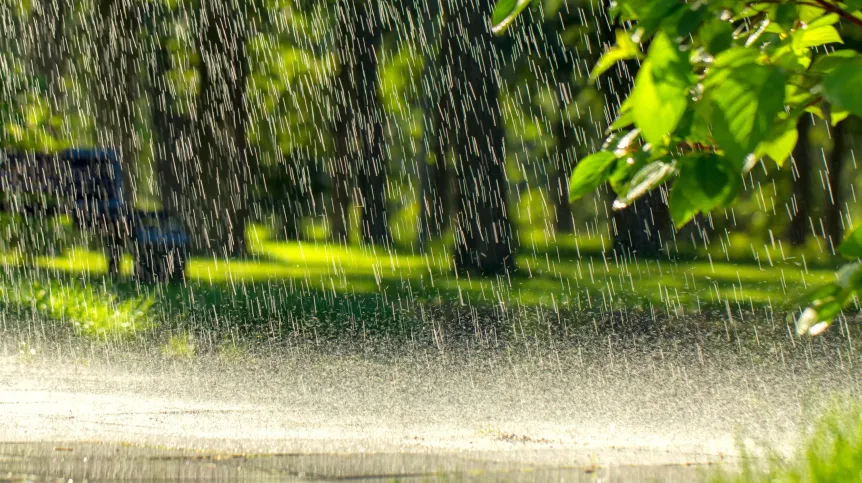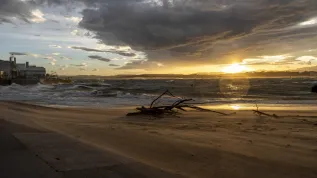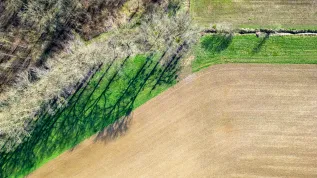
Poland is not threatened with desertification in the coming decades, but we to have the problem of drought. Droughts are more frequent, cover larger areas of the country and are more intense. Heavy rains do not solve the problem; they bring the risk of flooding, they do not end droughts, emphasises ecohydrologist Sebastian Szklarek, PhD.
The expert points out that droughts have a real impact on the economy, and above all on agriculture.
According to Szklarek, an expert from the European Regional Centre for Ecohydrology of the Polish Academy of Sciences, author of the blog Świat Wody (World of Water), easily accessible water resources in Poland are not only decreasing, they are also being misused.
'When there is heavy rain, we often hear: +oh, that's good, it will be less dry+. Meanwhile, it is precisely these most spectacular rainfalls that replenish our water resources to the least extent. Land that has been dry for a long time does not absorb rapidly falling water. Such rainfalls are similar to watering a dried-out plant, when instead of soaking in, the water runs off the surface. However, on a national scale, this effect has serious consequences', the expert says.
He explains that terms such as 'desertification' or 'steppeification' describe changes in the landscape, in which areas previously covered with vegetation gradually become arid and transform into dry, barren spaces resembling deserts or steppes. Although this situation does not currently concern Poland directly, the problem of changes in the structure of vegetation and increasing soil aridity exists and increases from year to year.
According to data from the Institute of Environmental Protection - National Research Institute, 45 percent of agricultural and forest areas in Poland are at risk of agricultural drought. Regions in the centre of the country, such as Wielkopolska, are particularly vulnerable. The effects that we can already observe include reduced yields, poorer quality of crops, their greater susceptibility to pests, and consequently higher food prices and problems in the agricultural sector.
'Contrary to popular belief, drought is not just a lack of rain. It is a disturbance of the water balance, i.e. a situation in which more water is lost from the landscape than is supplied to it. In practice, this means less rainfall and at the same time more evaporation. The latter is additionally increased by high temperatures and wind', Szklarek says.
All these unfavourable processes are driven by climate change. Rainfall has been less frequent in recent years, but more intense, even torrential. As a result, although a lot of water falls sometimes, it happens in a short time, so the water has no chance to soak into the soil and instead of feeding plants or replenishing underground resources, it flows quickly over the surface, often causing floods. This is followed by long periods without rain.
'It can be compared it to a potted plant. If you do not water it for two weeks and then water it with a whole can at once, most of the water will overflow and spoil the windowsill, and the plant will wither anyway. Such extremes are not good for nature either', the ecohydrologist illustrates.
In addition, increasingly high temperatures mean that water disappears from the landscape even faster: it evaporates from puddles, from the soil and plants, deepening the problem of shortages. Due to the changing water balance of entire regions, not only fields are at risk, but also forests, rivers and reservoirs.
'Low water resources are one thing, but equally serious problems are the excessive drainage of rainwater, concreted cities and the lack of natural forms of retention', the researcher emphasises. 'For decades, we have been dominated by thinking about getting rid of water: draining fields, drying areas. Meanwhile, we should retain it where it falls - in the landscape, in the soil, in small reservoirs. Every drop matters', he adds.
In his opinion, the biggest challenge is adaptation to changing climate conditions. This means, among other things, restoring wetlands, retaining water where it falls, using natural retention methods, and changes in agriculture, e.g. introducing crops more resistant to drought and rational water management.
The expert reminds that for decades, urban development and water engineering have focused on draining rainwater as quickly as possible, treating it as waste. Meanwhile, in the current conditions, it is a valuable resource that should be retained and reused. In addition to system-wide actions, this means the need to implement small retention solutions, reuse sewage, introduce greenery and water reservoirs in cities, and keep educating the public.
'In Poland, access to drinking water is not at risk for now, because most of us use underground intakes, which are more stable than surface ones. In addition, large intakes, e.g. in the Vistula, often use water from the bottom of the river, so even if the water level drops, collection will still be possible. But over time, problems may start to emerge in Poland, just like they already do in some regions of Spain. We need to prepare for them appropriately', he points out.
PAP - Science in Poland, Katarzyna Czechowicz (PAP)
kap/ bar/ amac/













